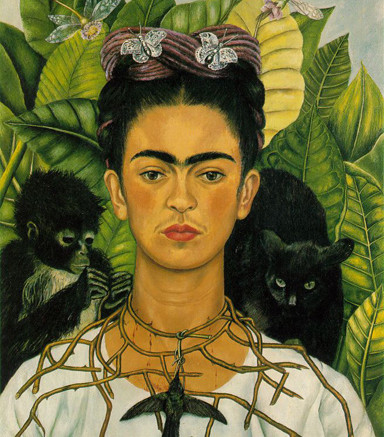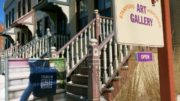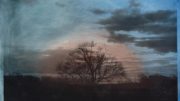On Sunday, October 11th, I had the opportunity to go to The New York Botanical Gardens and visit the Frida Kahlo exhibit. It featured representations of Kahlo’s gardens, 14 of her exquisite paintings and sketches, and actual aspects from her studio where she painted some of her most famous still-lifes.
Out of the 14 pieces that were displayed in the main library, two featured painting were “Still Life with Watermelons” (1953) and “Sun and Life” (1947). These works made a major impact, because Kahlo’s detail is shown really well in the still life even though at this time, in 1953, her health was rapidly fading. “Sun and Life” was painted in 1947, one of her healthier years. This piece is a great depiction of the relationship between nature and life and displays Kahlo’s love for unique-looking flowers and plants.
The most interesting aspect of looking at her paintings and sketches was noticing her craftsmanship and attention to detail dwindle down as the years went on. Kahlo’s death occurred July 13th, 1954. The last painting shown in this exhibit, called “Self-Portrait Inside a Sunflower”, was painted in 1954. Kahlo was close to her death at this point. There is very little detail in her face and almost none in the landscape in the background. Her health, at this time, did not allow her to be so particular and precise with her technique.
Besides her actual pieces of work, this exhibit also captured Kahlo’s living environment, the house where she grew up in, and her studio space built for her by her husband, Diego Rivera.
On one of the upper levels of the gardens was a representation of the plants, flowers, and fruits that inspired a majority of Kahlo’s still life paintings. One of my favorite parts of this section of the garden was the cactus fence. Along the side of one of the upper buildings stood 45-50 cacti all lined up in a fence-like form. The cactus fence was a significant trademark in Frida’s garden, she took a lot of pride in it and took care of the cacti to keep them alive and healthy. It was amazing to see much an iconic representation of such an important aspect of her garden in person.
In addition to the cactus fence, many other plants stood in the garden such as; agave, lilypads, and lady’s eardrops. The exhibit mentioned that Kahlo consistently had agave and cocoa plants planted in her garden in Mexico City. Seeing all of these plants up close and personal gave onlookers a newfound appreciation for her still life paintings and the time she invested into making them look so realistic.
Overall, the exhibit was something every Frida Kahlo lover and art enthusiast should get the chance to see. Looking at artists’ inspiration can give you a chance to get inside their heads and ask yourself, “What was this artist thinking when they painted this?” Looking at other artists’ muses can even give you some ideas of your own.
The exhibit is being held at The New York Botanical Gardens until November 1st, so if you have a free weekend I’d highly recommend this exhibit. It is definitely worth seeing.
For more information on The New York Botanical Gardens and their Frida Kahlo exhibit check out their website, http://www.nybg.org/frida/





